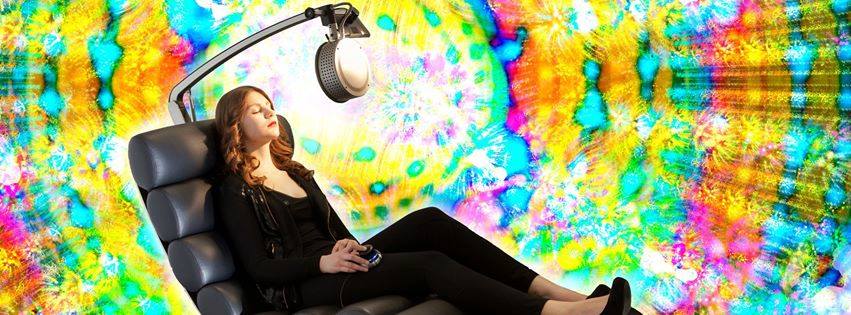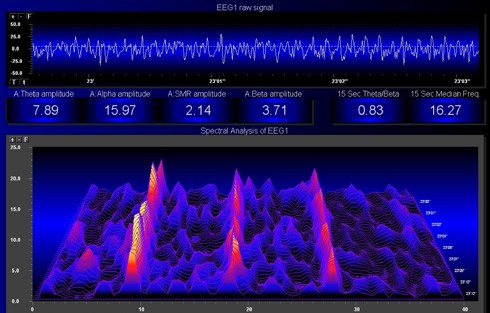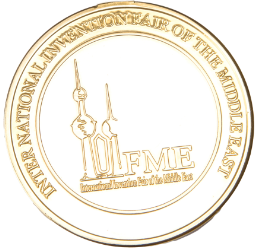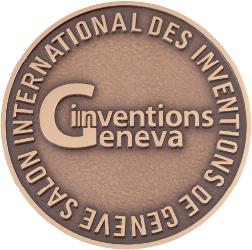
Hypnagogic Light Experience & Lucia N°03 Meditation Lamp - Unlcock Your Conscious
Explore the fascinating phenomenon of Hypnagogic Light Experiences and their connection to the pineal gland, consciousness, and overall well-being. Lern how Hypnagogic Light Sessions can support you in your everyday challenges. Discover the innovative Lucia N°03 meditation lamp, designed by Dr. Dirk Proeckl and Dr. Engelbert Winkler, to induce deep relaxation and transformative states of consciousness using constant and flickering light.
Definition of Hypnagogic Light Experience
The term "Hypnagogic Light Experience" refers to a phenomenon that we are all familiar with - being in the transition from wakefulness to sleep. It involves the perception of vivid and often colorful visual images, patterns, or flashes of light. These experiences can vary widely from person to person and may include geometric shapes, scenes, or abstract imagery.
This state con occur spontaneously or can be induced through techniques such as meditation, sensory deprivation (i.e. complete elimination of all sensory impressions - e.g. floating) or certain breathing exercises.
These experiences are believed to arise from the brain's natural processes as it transitions between different states of consciousness. They are often described as dream-like and can be accompanied by feelings of relaxation, disorientation, or even euphoria.
Hypnagogic Light Experiences have been of interest to researchers studying consciousness, perception, and the brain's activity during sleep. They are also sometimes explored in the context of artistic expression, meditation practices, and spiritual or mystical experiences.
The Pineal Gland and its Role in Consciousness
The pineal gland (epiphysis) is a tiny, pinecone-shaped endocrine gland in the center of the brain. Despite its small size, the pineal gland is extremely important for our mental, physical and spiritual health.
Understanding the Pineal Gland and its Importance in the Light Experience
One of the primary functions of the pineal gland is the production of melatonin, a hormone that regulates the sleep-wake cycle, also known as the circadian rhythm. Melatonin production by the pineal gland is influenced by environmental factors such as light and darkness. When exposed to darkness, the pineal gland increases its production of melatonin, which helps induce sleep. Conversely, exposure to light inhibits melatonin production, promoting wakefulness.
The pineal gland, despite being a relatively small structure in the brain, has garnered attention for its potential involvement in light experiences, particularly those occurring during the transition between wakefulness and sleep. While the exact mechanisms are not fully understood, several theories propose its significance in light experiences:
1. **Melatonin Regulation**: The pineal gland is responsible for producing melatonin, a hormone involved in regulating the sleep-wake cycle. Melatonin production is influenced by exposure to light, with darkness stimulating its release. Light experiences may be influenced by fluctuations in melatonin levels, particularly during the transition from light to dark environments, as melatonin levels rise.
2. **Circadian Rhythm Influence**: The pineal gland's production of melatonin helps synchronize the body's internal clock, known as the circadian rhythm, with external light-dark cycles. Disruptions in this synchronization can affect sleep patterns and may contribute to altered states of consciousness, including light experiences.
3. **Sensitivity to Light**: While the pineal gland is primarily associated with responding to darkness, it contains photoreceptor cells that are sensitive to light. These cells, known as pinealocytes, contain photopigments similar to those found in the retina of the eye. Although their exact function is not fully understood, they may play a role in detecting changes in light levels and transmitting this information to the brain.
4. **Neurotransmitter Modulation**: The pineal gland has been implicated in the synthesis and release of various neurotransmitters, including serotonin and dimethyltryptamine (DMT). These neurotransmitters are involved in mood regulation, consciousness, and altered states of perception. Changes in neurotransmitter activity within the pineal gland may influence the perception of light experiences.
5. **Spiritual and Mystical Interpretations**: Across various spiritual and mystical traditions, the pineal gland has been associated with the "third eye" and regarded as a center of spiritual insight and intuition. While these interpretations are often speculative and not grounded in scientific evidence, they underscore the gland's symbolic significance in experiences related to light, enlightenment, and higher consciousness.
The Pioneers: Dirk Proeckl and Engelbert Winkler
Dr. Dirk Proeckl and Dr. Engelbert Winkler are the inventors of the Lucia N°03 meditation lamp. They developed this device in 2009 and patented it. The lamp is continuously developed and distributed worldwide by the light attendance gmbh, which was founded in March 2011 and is based in Innsbruck, Austria.
Their Contribution to Hypnagogic Light Experience
Background of Dirk Proeckl and Engelbert Winkler
Dr. Dirk Proeckl is neurologist and psychotherapist who had his own practice in Austria and is now retired. Dr. Engelbert Winkler is a clinical psychologist who had an intense near-death experience at the age of 7. This experience led him to perform extensive research on the phenomenon of near-death experiences.
Together, they developed the concept of "Neuropsycholysis", a new approach in the application of a neurologically induced altered state of consciousness for self-exploration and therapy. Their work with the Lucia N°03 lamp allows users to experience deep, meditative states and explore new facets of their consciousness.
Deep Relaxation and the Lucia N°03 Light Session
A Lucia N°03 light session is designed to induce a state of deep relaxation. Here's what you can expect from a session:
1. **Visual Journey**: Each session with the Lucia N°03 is a unique journey within. Colors, shapes, and patterns dance behind closed eyelids, creating a kaleidoscope of light.
2. **Deep Relaxation**: Alongside the visual journey, the body begins to let go and deeply relax. The wide-spectrum light of the halogen bulb in the center of the Lucia N°03 is reminiscent of the sun, allowing the body to relax and open.
3. **Neuro-Stimulation**: The Lucia N°03 uses a combination of solid and flashing white light to pull you into a state of deep relaxation. This stimulation temporarily alters the person’s Theta brain waves, lowering them to a level that is achieved after decades of meditation practice.
4. **Personal Growth and Healing**: Visionary journeys, healing memories, and deeper understandings can emerge during the session. The Hypnagogic Light Experience facilitated by a Lucia N°03 light machine can lead to transcendental experiences, generating the same positive side effects.
The Wide Spectrum of Light and its Effects on the Central Brain
The wide spectrum of light refers to the entire range of electromagnetic radiation that is visible to the human eye, extending from shorter wavelengths such as ultraviolet (UV) light to longer wavelengths such as infrared (IR) light. Light, particularly within the visible spectrum, plays a crucial role in regulating various physiological processes, including those in the central brain.
How it Impacts the Central Brain Functions
The wide spectrum of light plays a significant role in our brain function and overall health. Some examples include:
Circadian Rhythm: Our bodies are tuned to the cycle of the sun, experiencing sunlight during the day and darkness during the night. This daily rhythm, known as the circadian rhythm, affects all of our major organ systems.
Light Exposure and Memory: Our brains are primed to learn new information during the day when there is a lot of light, and then to store it in long-term memory during the dark night as we sleep. Bright light exposure activates regions of the brain that promote alertness, and improves cognitive performance. Light activates factors that are essential for memory formation, as well as factors that are important for the regulation of mood and overall brain health.
Conclusion
Lucia N°03 induces the hypnagogic light experience, which can lead to other states of consciousness quickly, legally and without psychedelic substances. The hypnagogic state of consciousness is defined as being between wakefulness and sleep, as we all know it. Lingering in the carelessness and beauty of an eternal NOW is the essence and goal of the hypnagogic light experience.
Below is a picture of harmony visible in the EEG (brain scan) after only a few minutes into a Lucia N°03 light experience.







